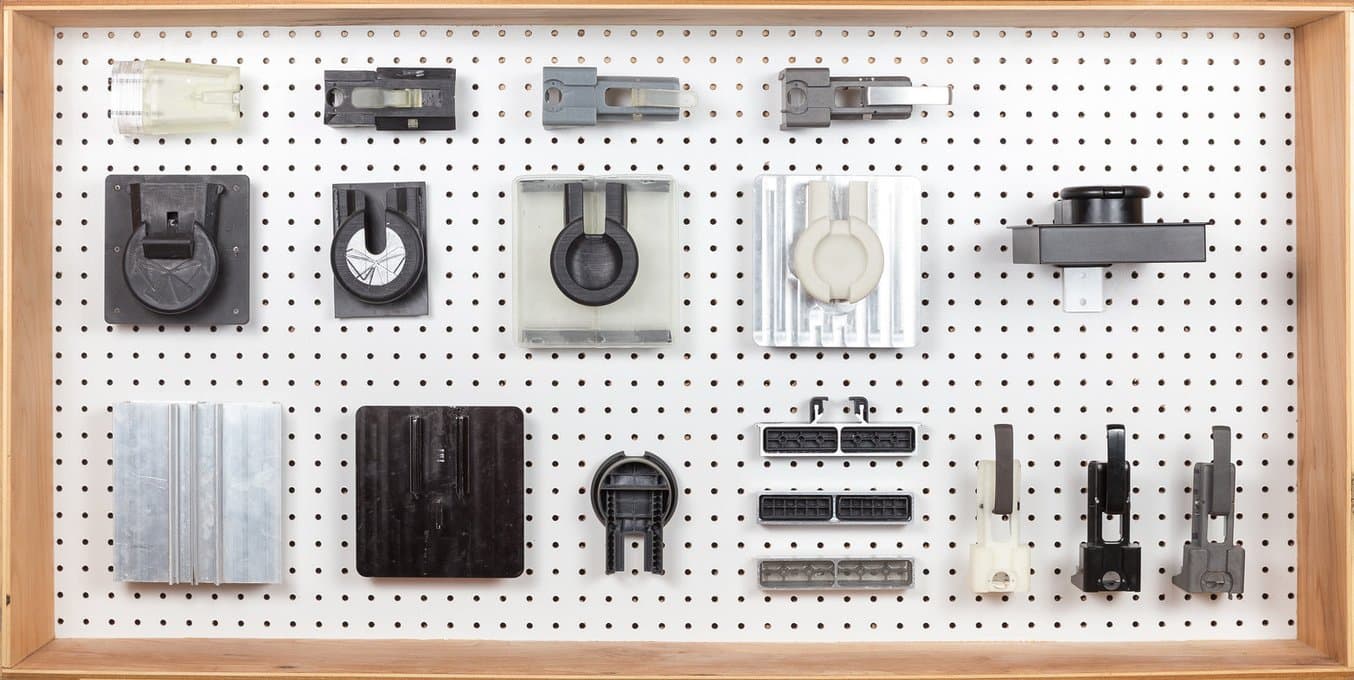
In product design, failure isn’t a bad thing — it’s essential to developing a great product. The important part is to fail early in the process instead of discovering flaws after shipment. Iterative prototyping allows you to test fit, feel, and scale with physical models and derive useful conclusions. This process encourages you to fail early instead of waiting until the end to see if the product fits user needs.
Formlabs engineer Kostas Oikonomopoulos helped to develop the Form 2 3D printer’s build platform handle with fit-and-feel testing with various scales and proportions. Creating a physical model helped him to see the component in the context of the full system and to evaluate the human interaction, which he couldn’t have done with a computer rendering alone.

1. Scale and Manufacturing
Even if the part you’re designing is large, creating smaller prototypes can still be helpful. Scaling down a model down and printing out a prototype on a 3D printer allows you to draw useful conclusions about the design. Prototyping, especially with 3D printing, shows you which components are too thin to manufacture, even by injection molding.

2. Human Interaction
Another benefit of rapid prototyping is that you can test real-life scenarios on how people use it. For the build platform handle, Kostas performed user testing to see how people naturally grabbed it. If it was too wide, their hands had to stretch. Too small, and the handle felt flimsy. In an ideal design, there must be no room for error—the user must be able to just look at the handle and know exactly how to interact with it.

3. Decoupling Features
CAD can be deceiving about what details are visible to the eye in the physical prototype. Sometimes CAD over-emphasizes small details like fillets and draft angles, but they won’t actually show up in a prototype. This is an issue not just for cosmetic features, but for function: in the first prototype of the build platform, users would place it on a table to rest upside down, and it would rock back and forth. In each iteration, Kostas and the Formlabs engineering team altered 4-5 features so that they wouldn’t have to pay for small changes. Rapid prototyping lets you afford to look into potential solutions in more detail.
In an ideal world, the first version of a product is the best. But as you can see from how the Form 2 build platform developed, the final version is vastly different from the first prototype. In total, there were nine full-fledged iterations. By failing quickly in the rapid prototyping process, Kostas and the other Formlabs engineers learned what didn’t work, which led them to their final version. For your project, consider using a desktop 3D printer to create prototypes within hours that you can test with users and share in your organization. Your team and the end product will benefit from failing quickly.